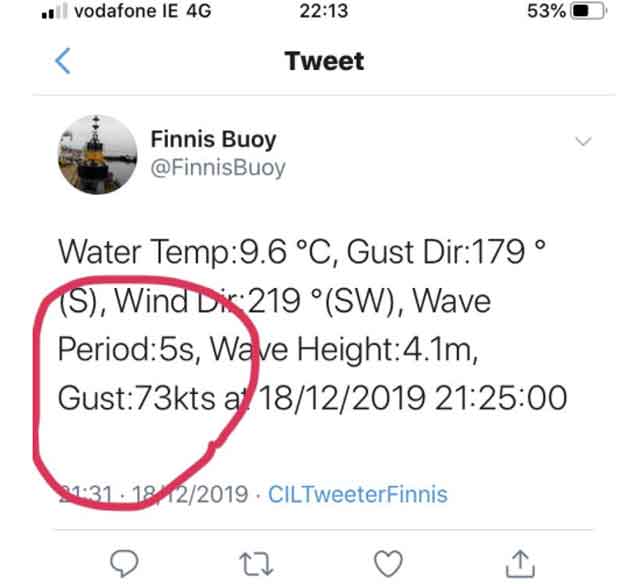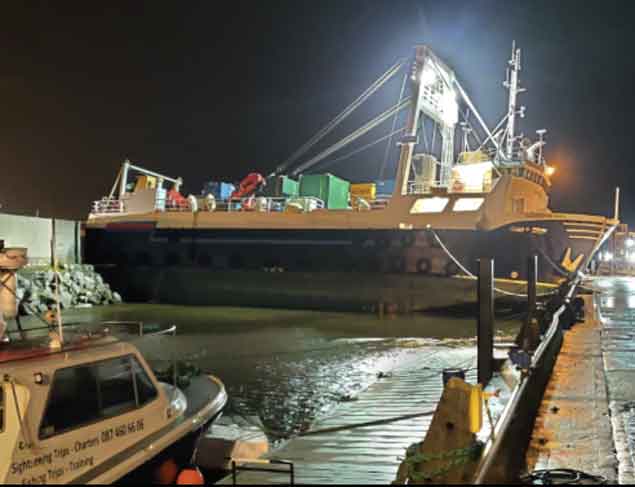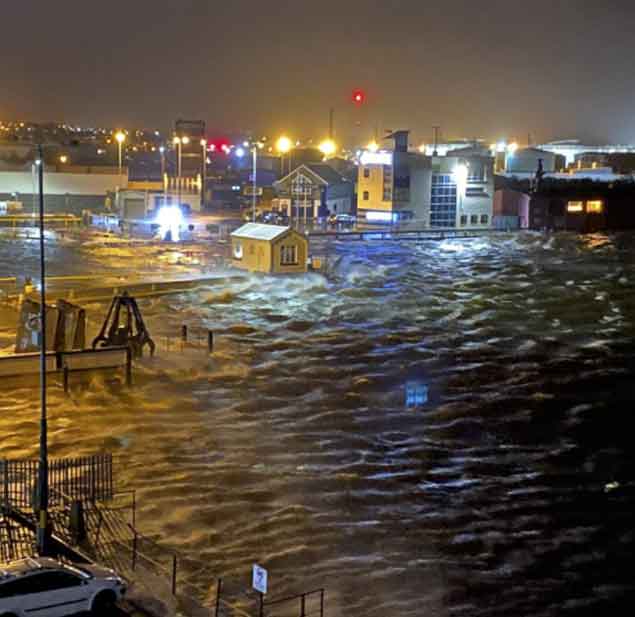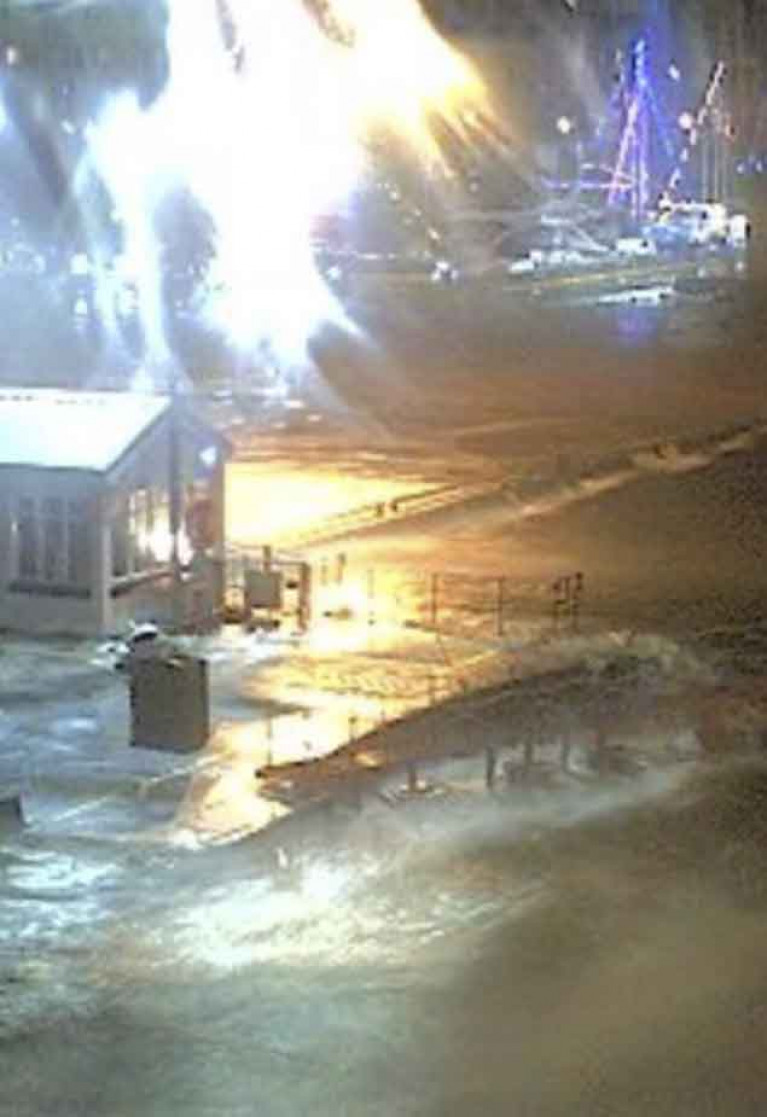There were severe gales around much of Ireland on Wednesday night, but at Galway Docks, in particular, the localised effects of a storm surge on extreme high water – with southwest winds of more than 70 knots - caused the Aran ferry to break some of its mooring lines at its berth outside the dock gate at the Fishermen’s Layby, with the ship finally coming to rest across the RNLI launching berth, effectively closing off the rescue services until the vessel could be re-floated this morning.
As Afloat reported earlier, the situation prompted Galway’s Harbourmaster to hit out at the lack of a storm warning.
 Precision measurement of a storm – in Galway Bay last night with south to southwest winds hitting 73 knots, the steep short waves on a period of 5 seconds were peaking at 4.1 metres.
Precision measurement of a storm – in Galway Bay last night with south to southwest winds hitting 73 knots, the steep short waves on a period of 5 seconds were peaking at 4.1 metres.
Conditions were such that the lock-gates themselves could not be closed until two hours after high water, while the ferry – having been freed today (Thursday) with the use of two mechanical diggers required to demolish part of a wall – has sustained quite substantial damage.
Experienced local sailors are saying that the night’s damage proved yet again that serious money needs to be spent, both to improve shelter and access to the entrance to Galway Docks, and provide better berthing generally for the most important port in Connacht.
 The Aran Islands ferry broke adrift from its alongside berth just outside the dock gates, and ended up aground across the entrance to the RNLI launching berth, with considerable damage sustained by the time the ship was refloated today (Thursday). Photo: Courtesy Pierce Purcell
The Aran Islands ferry broke adrift from its alongside berth just outside the dock gates, and ended up aground across the entrance to the RNLI launching berth, with considerable damage sustained by the time the ship was refloated today (Thursday). Photo: Courtesy Pierce Purcell Collateral damage……some of the area immediately around the docks was flooded. Photo: Courtesy Pierce Purcell
Collateral damage……some of the area immediately around the docks was flooded. Photo: Courtesy Pierce Purcell































































